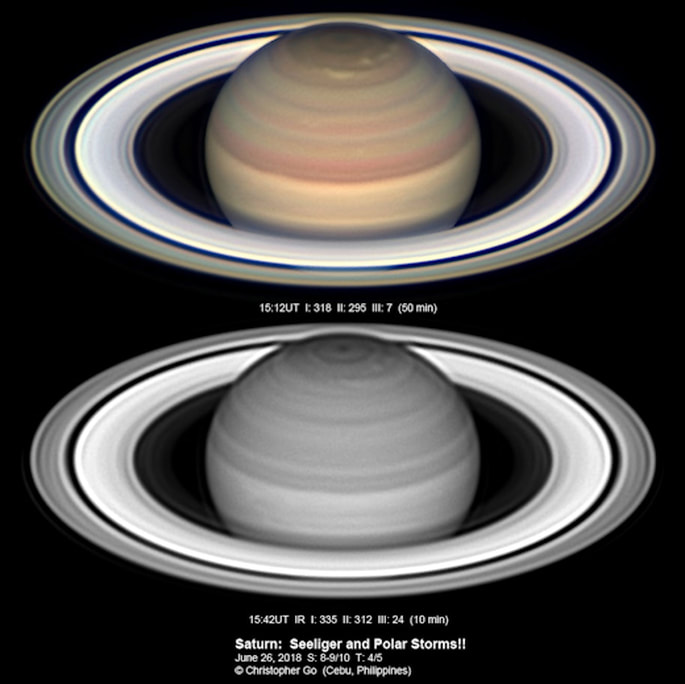Even a small telescope will reveal Saturn's magnificent rings. Christopher Go sends this picture taken last night from Cebu City in the Philippines:
Saturn's rings are bright near opposition in part because the rings are closer than usual to Earth. They get an additional boost from "the Seeliger Effect," named after the German astronomer Hugo van Seeliger who first described it in the 19th century. It happens when sunlit objects such as the icy particles that make up Saturn's rings hide their own shadows. Opposition is the perfect time for the Seeliger effect because Saturn and the sun are on diametrically opposite sides of the sky. A process called coherent backscattering may also contribute to the extra luminosity.
If you have a small telescope, tonight is a great time to use it. Point your optics at Saturn and enjoy the show. www.spaceweather.com

 RSS Feed
RSS Feed